Top Cyber Security Interview Questions & Answers For 2025
4.9 out of 5 based on 8748 votesLast updated on 30th Mar 2024 19.8K Views
- Bookmark

Discover top cybersecurity interview questions & expert answers to ace your next job interview in the cybersecurity field. Get prepared now!
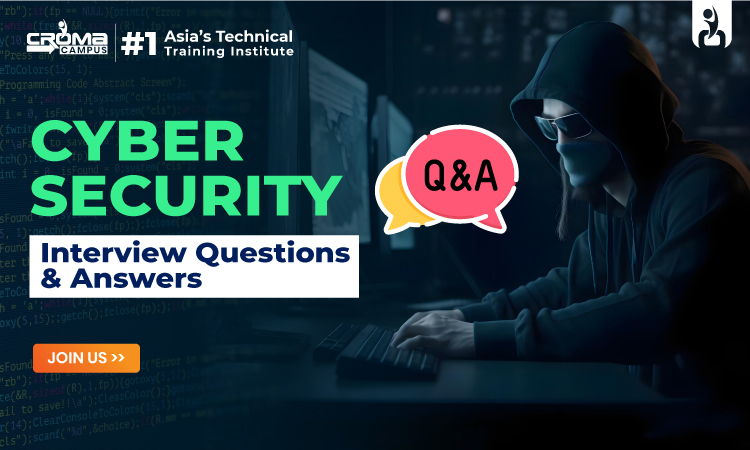
Protecting our data, privacy, and critical systems is essential in today's digital age. With technology becoming increasingly integral to our lives, cyber threats are also on the rise. In this blog, we'll explore cybersecurity from fundamental concepts to advanced strategies.
We'll cover a wide range of interview questions and answers tailored to various levels of expertise. Whether you're new to Cyber Security Course or a seasoned professional, this comprehensive guide will help you stay informed and prepared to tackle the challenges posed by cybercriminals.
Top Cyber Security Interview Questions for Freshers
1. What is the primary objective of cybersecurity? Why is it crucial in today's digital age?
Cybersecurity aims to protect computer systems, networks, and data from theft, damage, or unauthorized access. It's vital due to the increasing reliance on technology and the growing threats posed by cybercriminals.
2. Can you differentiate between a Virus, Malware, and Ransomware?
- Virus: A program that self-replicates and spreads to other files or systems, causing harm.
- Malware: Any malicious software designed to disrupt or gain unauthorized access to computer systems.
- Ransomware: Malicious software that encrypts files or systems and demands a ransom for decryption.
3. Explain the concept of Threat, Vulnerability, and Risk in cybersecurity.
- Threat: Any potential danger or harmful event that exploits vulnerabilities and compromises security.
- Vulnerability: Weaknesses or gaps in security measures that attackers exploit to carry out threats.
- Risk: The likelihood of a threat exploiting a vulnerability and the potential impact or consequences it may have.
4. What is Phishing, and how does it work? Provide a real-world example.
Phishing is a type of cyberattack where attackers use deceptive emails or messages to trick individuals into revealing sensitive information.
Example: A fraudulent email impersonating a bank and asking recipients to click a link to update their account information on a fake website.
5. How do firewalls contribute to network security?
Firewalls act as a protective barrier between a network and external threats, monitoring and controlling incoming and outgoing traffic based on predetermined security rules. They block unauthorized access attempts and filter out potentially malicious data, enhancing network security.
6. What is the purpose of a VPN, and why is it used?
A VPN (Virtual Private Network) encrypts and secures internet connections, ensuring privacy and anonymity. It protects data from eavesdropping, grants access to restricted content, and enhances security, especially on public Wi-Fi networks.
7. Describe a secure Password.
A secure password is complex, lengthy, and difficult to guess. It includes a mix of uppercase and lowercase letters, numbers, and special characters. Each account should have a unique password for added security.
8. What are common techniques for securing a computer network?
Common techniques include using strong passwords, regularly updating and patching systems, implementing firewalls, employing intrusion detection systems, and conducting regular security audits.
9. Explain two-factor authentication and its significance.
Two-factor authentication requires users to provide two separate forms of verification, typically a password and a temporary code. This adds an extra layer of security, preventing unauthorized access even if a password is compromised.
10. Define Encryption and Decryption.
Encryption involves converting plaintext data into a coded format to protect it from unauthorized access. Decryption reverses this process, converting encrypted data back into its original, readable form.
11. What is SSL encryption?
SSL (Secure Sockets Layer) encryption is a protocol that ensures secure data transmission between a user's web browser and a website server, safeguarding data during transit.
12. Differentiate between IDS and IPS.
IDS (Intrusion Detection System) monitors network traffic and alerts upon detecting suspicious activity, while IPS (Intrusion Prevention System) not only detects but also actively blocks or prevents such activity.
13. Define a security audit.
A security audit evaluates an organization's information systems and security policies to assess effectiveness, identify vulnerabilities, and recommend improvements.
14. Outline steps to address a security breach.
Steps include isolating affected systems, containing the breach, notifying relevant parties, investigating the incident, remediating vulnerabilities, and implementing measures to prevent future breaches.
15. Explain social engineering with an example.
Social engineering manipulates individuals into divulging confidential information or performing actions for malicious purposes. For instance, pretending to be a trusted colleague to obtain login credentials over the phone.
16. Explain cookies in a web browser.
Websites store cookies on a user's device to track preferences, session data, and personalize browsing.
17. Define DDoS attack and its operation.
A DDoS attack floods a server or network with excessive traffic from various sources, rendering it inaccessible to legitimate users.
18. What is a security policy?
A security policy is a set of documented rules and protocols that outline how an organization protects its information, assets, and technology.
19. Difference between symmetric and asymmetric encryption?
Symmetric encryption uses the same key for both encryption and decryption, while asymmetric encryption utilizes a pair of keys: public and private.
20. How to prevent a Man-In-The-Middle attack?
Utilize secure communication protocols, verify digital certificates, avoid public Wi-Fi for sensitive tasks, and implement robust encryption.
21. What is a honeypot in cybersecurity?
A honeypot is a fake system or network created to lure attackers, allowing security experts to analyze their methods and motives.
22. Explain digital signatures.
Digital signatures use cryptographic techniques to verify the authenticity and integrity of digital documents or messages, confirming the sender's identity and content integrity.
23. Define brute force attack.
A brute force attack involves attackers trying every possible combination systematically to find a password or encryption key.
24. What are common cyber threats?
Common threats include malware, ransomware, phishing, DDoS attacks, insider threats, and zero-day vulnerabilities.
25. Role of patch management in security?
Patch management applies regular updates and fixes to software and systems, addressing security vulnerabilities to prevent exploitation by attackers.Top of Form
Commonly Asked Cybersecurity Questions for Intermediate Users
1. What is Public Key Infrastructure (PKI)?
PKI is a cryptographic system facilitating secure communication on insecure networks. It utilizes public-private key pairs for encryption, decryption, digital signatures, and authenticating public keys through certificate authorities (CAs).
2. Key elements of a strong security policy?
A robust security policy encompasses access control, encryption, regular updates, user training, incident response plans, and compliance with regulations.
3. How does a rootkit function and how to detect it?
A rootkit grants unauthorized access to a computer or network. Detection involves using anti-rootkit tools and monitoring suspicious system behavior.
4. Explain cross-site scripting (XSS) and SQL injection.
XSS injects malicious scripts into web apps, compromising user data. SQL Injection exploits SQL query vulnerabilities to manipulate databases, both posing web app security risks.
5. Define zero-day vulnerability.
A zero-day vulnerability is undisclosed to vendors, lacking a solution. Malicious actors exploit it before a fix is available.
6. Discuss ISO 27001/27002 standards.
ISO 27001 outlines information security management systems (ISMS), while ISO 27002 offers security control and practice guidelines.
7. How do threat detection systems operate?
They monitor network traffic and system logs for suspicious activities, utilizing predefined rules and machine learning algorithms.
8. Principles of ethical hacking.
Ethical hacking involves authorized system testing, ensuring confidentiality, and responsible disclosure of findings.
9. Types of network security.
Network security encompasses perimeter protection, firewalls, intrusion detection, VPNs, and network segmentation.
10. Explain risk assessment in cybersecurity.
Risk assessment identifies, evaluates, and prioritizes threats and vulnerabilities to inform security decisions.
11. What is incident response and its management?
Incident response is a systematic approach to handle and mitigate security incidents, involving preparation, detection, containment, eradication, recovery, and knowledge acquisition phases.
12. Explain the principle of least privilege.
The principle of least privilege restricts user and process access to the minimum necessary for their tasks, reducing the risk of unauthorized actions.
13. How does the Secure Socket Layer (SSL) work?
SSL ensures secure data transmission between web browsers and servers by encrypting, authenticating, and checking data integrity.
14. Define network sniffing.
Network sniffing intercepts and analyses network traffic to gather information, potentially for malicious purposes, for monitoring or attacks.
15. Importance of disaster recovery planning in cybersecurity.
Disaster recovery planning proactively prepares for and responds to data loss or system failures, ensuring business continuity.
16. What is a Security Information and Event Management (SIEM) System?
SIEM systems gather, correlate, and analyze security data from various sources to detect and respond to security events.
17. How to manage cryptographic keys securely?
Cryptographic keys should be securely generated, stored, rotated, and protected to maintain data confidentiality and integrity.
18. Common methods for secure data disposal.
Data shredding, overwriting, degaussing, and physical destruction are common methods to prevent the recovery of sensitive information from storage media.
19. Explain endpoint security.
Endpoint security focuses on securing individual devices using antivirus, anti-malware, and intrusion detection systems.
20. Define the role of artificial intelligence in cybersecurity.
AI enhances cybersecurity defenses through threat detection, pattern recognition, and anomaly detection, automating incident response.
21. Explain about the challenges in cloud security.
Cloud security challenges include data breaches, compliance, data loss prevention, and securing shared responsibility models.
22. Difference between penetration testing and vulnerability assessments.
Penetration testing simulates real attacks to discover vulnerabilities, while vulnerability assessments scan systems to detect known weaknesses.
23. What is a Security Operations Center (SOC)?
SOC is a centralized team responsible for real-time monitoring, detecting, and responding to security incidents.
24. Importance of compliance in cybersecurity.
Compliance ensures adherence to relevant laws and regulations, safeguarding data, and preventing legal consequences.
25. Define multi-factor authentication (MFA) and its security enhancement.
MFA strengthens security by requiring users to provide multiple authentication factors, typically something they possess and something they know.
Also Read This Posts:
Benefits Of Learning Cyber Security
How Do I Become A Cyber Security Professional
Cyber Security Importance In Digital Marketing
Benefits Of Cyber Security Certification
Top Cyber Security Interview Questions for Advanced Users
1. Discuss the challenges and strategies of securing IoT devices.
-
- Challenges: Device diversity, limited resources, and vulnerabilities.
- Strategies: Regular updates, strong authentication, network segmentation, and IoT security frameworks.
2. Explain Advanced Persistent Threats (APT).
APTs are long-term, targeted cyberattacks by skilled adversaries. They use stealth, persistence, and sophisticated techniques to breach systems.
3. Discuss the role of blockchain in cybersecurity.
Blockchain can enhance security through decentralized consensus, data integrity, and immutable records. It's used in secure transactions and identity management.
4. How do you approach securing a large, distributed network?
Employ segmentation, strong access controls, regular audits, and network monitoring to protect against threats across a vast network.
5. What is the importance of forensics in cybersecurity?
Forensics helps investigate incidents, gather evidence, and understand attack vectors, aiding in incident response and legal actions.
6. Discuss the intricacies of network protocol security.
Secure protocols are essential for data confidentiality and integrity. Use encryption and authentication, and keep protocols updated to mitigate risks.
7. How do you manage security in a DevOps environment?
Implement security into the development pipeline with automation, continuous monitoring, and collaboration between development and security teams.
8. Explain the concept of micro-segmentation in network security.
Micro-segmentation isolates network segments for finer control and security. It limits the lateral movement of threats within a network.
9. Discuss the challenges of securing big data environments.
Challenges include data volume and diversity. Strategies involve encryption, access controls, monitoring, and data classification.
10. What are your strategies for managing supply chain risks in cybersecurity?
Assess third-party vendors, enforce security standards, conduct audits, and maintain a supply chain risk management program.
11. Explain container security.
Secure containerized applications using image scanning, access controls, and runtime protection to prevent vulnerabilities.
12. How do you ensure GDPR compliance?
Ensure compliance with data protection laws like GDPR by implementing policies, conducting privacy assessments, and respecting consent and data subject rights.
13. Discuss future cybersecurity trends.
Future trends include AI/ML for threat detection, zero-trust architecture, cloud security, and a heightened focus on IoT and 5G security.
14. What are the ethical considerations in cybersecurity?
Ethical concerns involve privacy, responsible disclosure, and avoiding harm to individuals and organizations.
15. How do you measure cybersecurity program effectiveness?
Measure effectiveness using metrics like risk assessments, incident response times, and security posture evaluations.
16. Discuss challenges in securing wireless networks.
Challenges include rogue access points and eavesdropping. Solutions include encryption, network monitoring, and user education.
17. Explain quantum cryptography and its security implications.
Quantum cryptography uses quantum mechanics for secure communication, resisting quantum attacks for long-term security.
18. What is federated identity management?
Federated identity allows access to multiple systems with one set of credentials, enhancing convenience and security.
19. Latest developments in cybersecurity threats.
Evolving threats include supply chain attacks, ransomware, and AI-driven attacks.
20. Managing security in a hybrid cloud environment.
Secure hybrid clouds with consistent policies, identity management, and data protection across on-premises and cloud resources.
21. Discuss the impact of artificial intelligence on cybersecurity threats.
AI automates threat detection, and enhances incident response, but can also be exploited by attackers.
22. Define the role of machine learning in cyber threat detection.
ML analyses data to detect anomalies and patterns associated with threats, enabling proactive security measures.
23. Explain threat intelligence and its application.
Threat intelligence collects and analyses data to identify and respond to emerging threats, enabling proactive cybersecurity.
24. Strategies for securing mobile applications.
Secure mobile apps with encryption, code reviews, secure APIs, and regular updates to prevent vulnerabilities and breaches.
25. Challenges and solutions in endpoint detection and response (EDR).
EDR solutions monitor and respond to endpoint threats in real time, providing visibility and incident response capabilities.
Other Related Courses:
Cisa Certified Information Systems Auditor
Certified Cloud Security Professional Course
Our cybersecurity program at Croma Campus will help you to learn all cybersecurity concepts along with top interview questions to master in 2025 and beyond. So, make yourself industry-ready and take a wise decision today.
Subscribe For Free Demo
Free Demo for Corporate & Online Trainings.
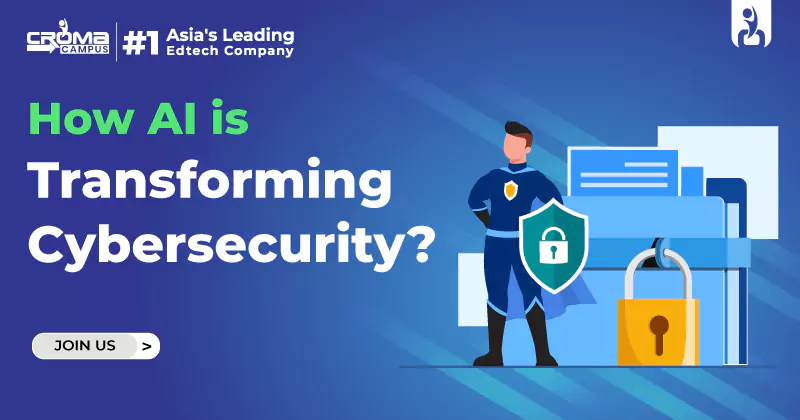
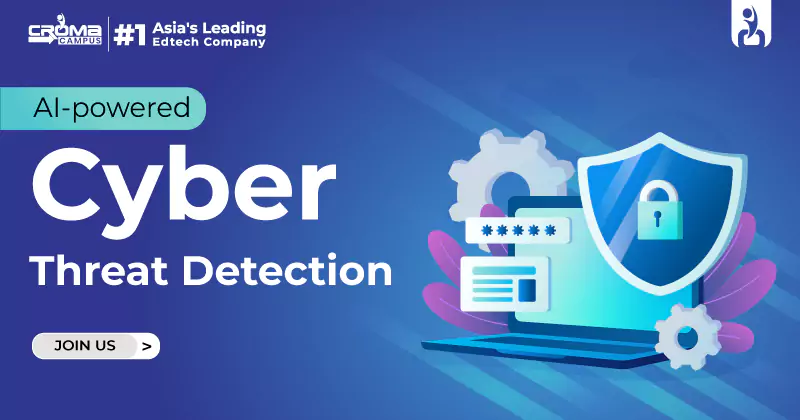
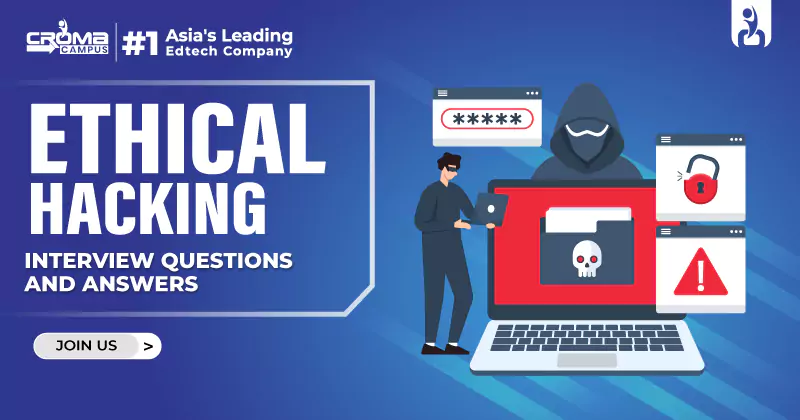
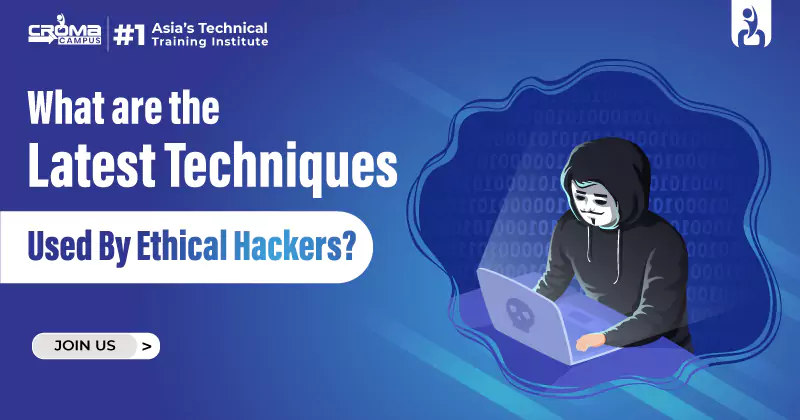
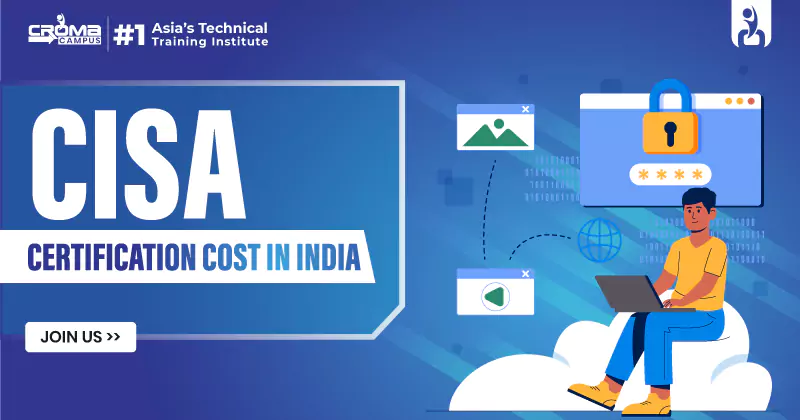

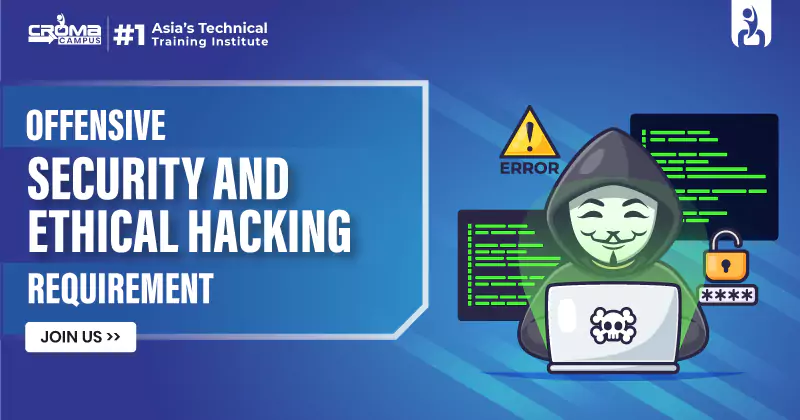
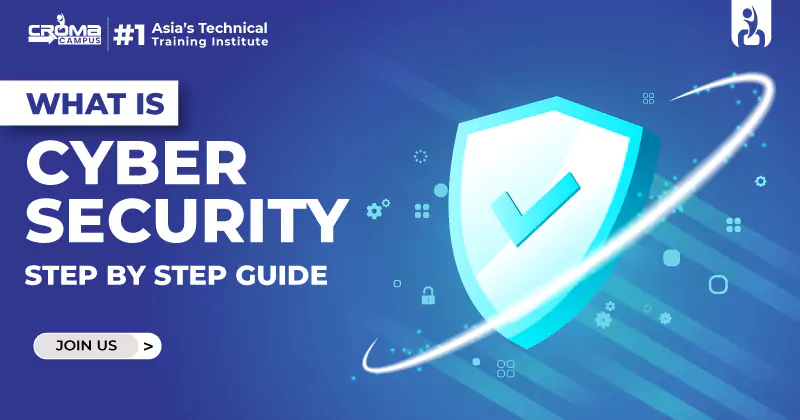

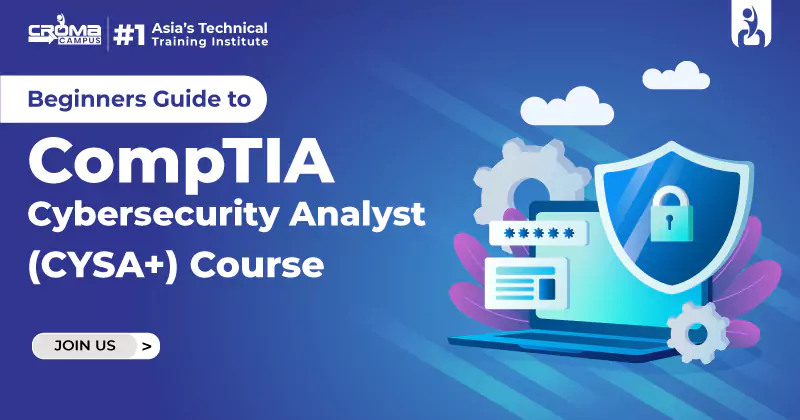

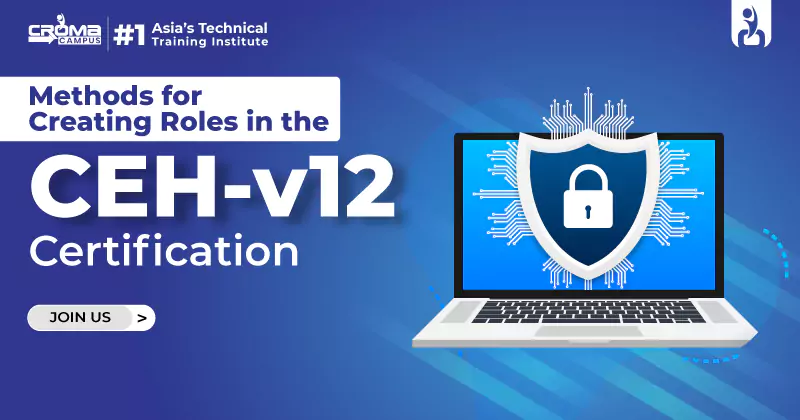













.webp)

.png)















